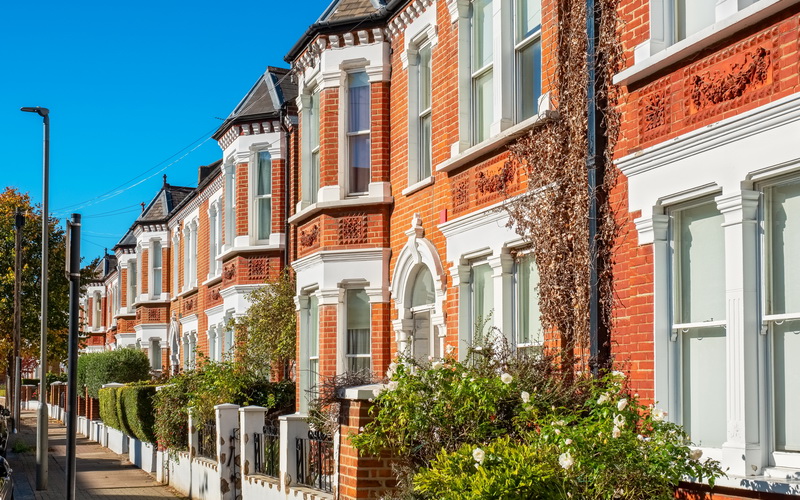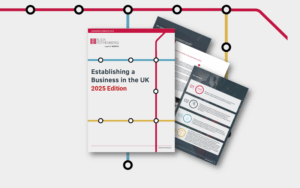The green agenda and VAT on energy saving materials
VAT relief available for the installation of energy saving materials for the UK domestic property market
* Information correct at the time of writing and is subject to changes announced in the Spring Budget
In announcing his Budget plans last week, did the Chancellor miss a trick ahead of this week’s COP26 conference? He was keen to point out that, as a result of Brexit, the UK can go its own way on many tax issues that were previously ruled over by the EU. However, when it came to climate change issues and using VAT as a motivator for a greener environment, he failed to use this newfound freedom.
This article explores just one of the areas where he could have made some simple but effective changes – the VAT relief available for the installation of energy saving materials for the UK domestic property market.
The current position
At present the UK allows the 5% reduced rate of VAT to apply to certain energy saving materials (as specified in law) when these are installed into qualifying domestic property and supplied to qualifying individuals or organisations. However, the relief is much too narrow, and the conditions are too complex and restrictive to make the relief worthwhile.
Currently, the rate of VAT is reduced from 20% to 5% for services relating to the installation of certain energy saving material, such as insulation material, heating control systems, air or ground source heat pumps, and solar panels, etc. However, there are a number of factors that limit the availability of this lower VAT rate, and various hurdles that need to be overcome before being confident that the 5% rate can apply. These conditions were imposed by the EU as recently as October 2019 when the UK Government were forced to adopt them.
The introduction of social policy condition
After EU intervention, from 1 October 2019, the availability of the 5% rate of VAT was significantly curtailed to the supply and installation of energy-saving materials only when provided to residential property where it met certain qualifying ‘social policy conditions’. In brief this means:
- The main residence of person aged over 60 or who is in receipt of certain state benefits.
- Residential accommodation provided by a registered social landlord or registered housing association.
- Property used for a relevant residential purpose (RRP) such as a children’s home or residential care home, etc.
The 60% test (not to be confused with over 60 age condition above)
If none of the above social policy conditions are met, then the 5% reduced rate of VAT can only apply if the ‘60% test’ is met. This means that the cost of the energy-saving materials (the actual goods being installed) must be less than 60% of the combined value of the materials and installation when supplied together. Where the 60% test is met the whole supply is eligible for the 5% VAT rate. However, if the 60% test is not met (i.e., where the cost of the energy-saving materials is more than 60% of the total value) then the 5% rate of VAT only applies to the value of the installation work and not the actual energy-saving materials being installed. This means that the costs of installing solar panels, for example, will be eligible for the 5% rate but the panels themselves, which are typically the largest element of the cost, will remain liable to 20%. The supplier will need to make an apportionment between the material (the solar panels and charge 20%) and the labour element (the installation costs on which 5% VAT can be charged). This results in a position whereby only homeowners and tenants over the age of 60 are eligible for the full VAT relief on solar panels. It would be a quick fix to reverse the EU’s restrictions and make the relief available to all house owners and tenants.
Another source of annoyance is that suppliers of energy-saving material (i.e., where goods are sold without any installation services) must charge VAT at 20%. Again, it would be a relatively simple measure to make sales of these, already specified goods, eligible for the 5%.
Also, where a contractor supplies services to landlords, the 60% test must be met (unless the property is a RRP building, or the recipient is a registered social landlord or registered housing association). This is because the recipient of the service (the landlord) is not the residential tenant and cannot be a qualifying person under the social policy conditions. Similarly, sub-contractors will also need to consider the 60% test as their supply will always be to the main contractor. These rules add extra layers of complexity for the building sector and only serve to limit the aim of incentivising the use of energy saving materials.
If the Government is serious about the green agenda, it should scrap these complicated social policy rules and the complexity of the 60% test and simply allow the VAT relief to apply to all energy saving material. This will reduce the cost for the consumer and also provide greater incentive and simplicity for the property sector.
Is the installation of energy-saving material the principal supply?
There is a further restriction that needs serious consideration by Government. Where a contractor is engaged to provide a refurbishment, enlargement, or conversation to an existing residential property, this will often include an element of energy saving material. However, the VAT relief doesn’t apply at all (even if the social policy conditions and/or the 60% test is met). This is because the contract is not for a specific supply of energy saving materials in its own right but a larger supply of building work. There is no provision for any apportionment to allow a part of the work to qualify for the reduced VAT rate.
This produces some bizarre results and to illustrate these you only need to look at the examples that HMRC provide in their published guidance:
- Having to cut a new loft hatch in the ceiling and making good the loft access when carried out solely in support of installing loft insulation is all eligible for the 5%. This is because loft hatch work is ancillary to the main supply of installing the energy saving roof insulation. However, if the work comprises the replacement of the existing roof with new loft installation, then the entire service would be subject to 20% VAT, as the loft insulation becomes ancillary to a standard-rated supply of a roof replacement (i.e., the installation of the energy-saving material is not the main or principal supply).
- Where there is supply of a new central heating system, which includes some energy-saving materials and components, no relief is allowed because again the principal supply is the provision of an entire central heating system.
- Where a residential extension is built, which again includes an element of energy saving material (i.e., the new walls and roof space are being insulated) no part will benefit from the 5% reduced rate as the principal supply is not the installation of energy-saving materials but the building of an extension.
In effect it’s an all or nothing contractual provision which results in most installations of energy saving material being subject to 20% VAT and with no incentive for the buyer or seller to include enhanced environmentally friendly products in larger building projects.
It would be easy for the UK Government to legislate for some method of apportionment, similar to many other types of building supplies where the contractor is able to identify and value parts of the work and apply different VAT rates as appropriate. At present the only way to achieve the benefit of the relief is to hive off the energy saving materials into a separate installation contract (so that contract becomes the principal supply and not part of a larger supply).
Final observation
Before 1 October 2019, it was the UK Government’s policy to allow a more liberal interpretation of the 5% reduced rate. It was the EU that forced the UK to limit its application. Now that the UK is no longer in the EU, the Government could not only revert back to the more generous relief that it had applied previously but it could go even further. If it really wants to demonstrate its commitment to the green agenda, it could make all energy saving materials zero rated removing the burden of VAT altogether. After all, zero rating already applies to newly constructed residential property so it wouldn’t be that big of a stretch to extend the scope of the zero rate. What better way to send a message to the rest of world by announcing such a move just ahead of hosting the COP26 conference? So, yes perhaps a missed opportunity in this year’s Autumn budget.
Contact us
If you would like to discuss any of the above please contact your usual Blick Rothenberg contact or Gabby Donald, using the details on this page.
Contact Gabby

You may also be interested in

Changes to FRS102 and it’s alignment to International standards

Unlocking Growth: What the Government’s 2025 Industrial Strategy Means for the UK’s Creative Sector













